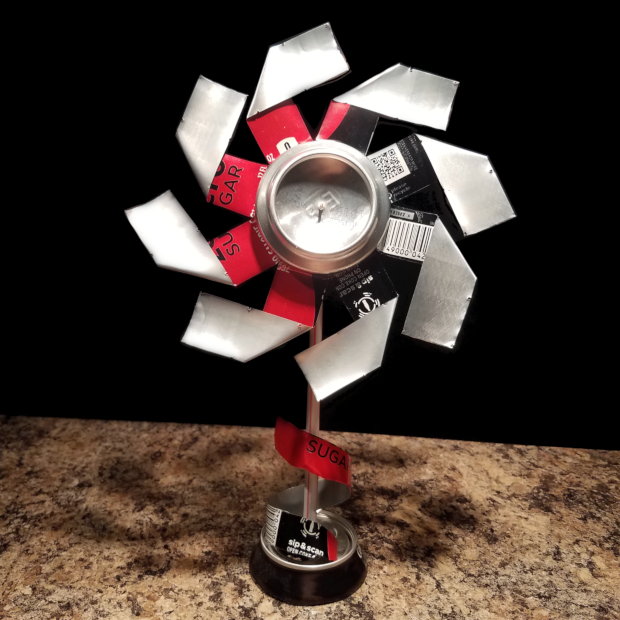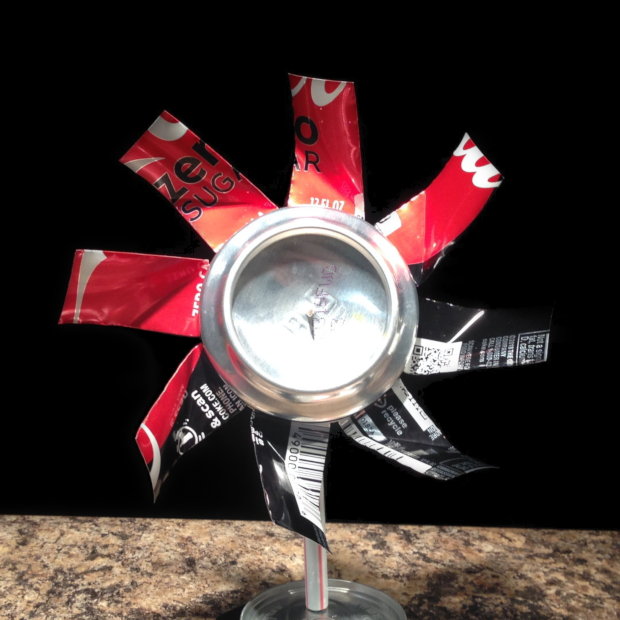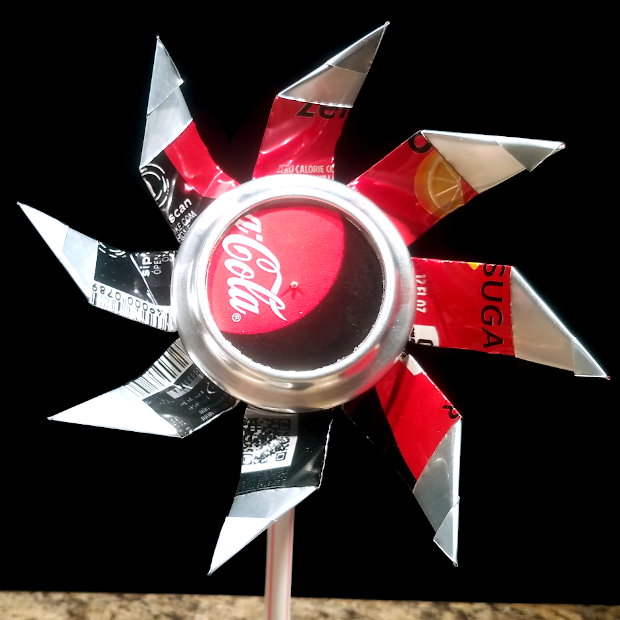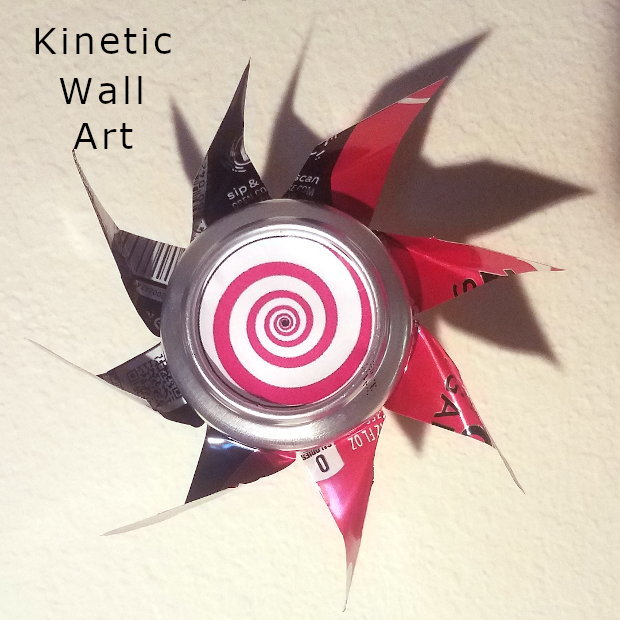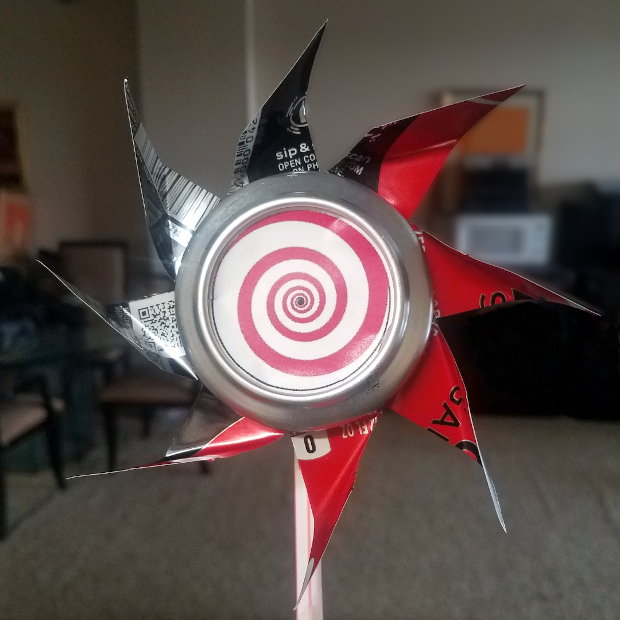Curving a Strip:
There's an easy way to do this, and it's not yet shown in the video. Just make three or four bends in the "leaves" so that they curve at the angle you want. The curves aren't smooth, but at least it's dead simple to do. See these photos as an example:

However, you may want to do it the "right" way. This technique requires the most care. You really don't want to slice your thumb when you do this. Until you're practiced at doing this correctly, you may want to use a thumbguard, or wrap your thumb in cloth, or wear a glove, or just use the curling wand.
The key thing to understand is that you don't need to press your thumb hard against the metal. Your index finger(s) does all the work; your thumb is only there to make sure that the metal takes on a curved shape, and your bottom fingers do all the work/pushing. This takes very little pressure to do. [If you're having trouble keeping your thumb away from the edge of the leg, then comleteley de-burr the legs first or cover your thumb with a towel or thimble.] Be aware of where your thumb is the entire time you're curving the metal. Note that the slider has curled up the edges of the panel towards the inside of the can as it cuts, so the outside of the segment is smooth to the touch, and the silver side has sharp edges that are a few tenths of a millimeters deep.
Place two fingers under the panel. Place your thumb against the silver side of the panel so that the thumb makes contact at the middle of the panel. Hold your thumb and two fingers (index and middle) so that the metal takes a nearly 180 degree turn over a relatively short area. Then pull your thumb-and-two-fingers up-and-outward along the length of the panel, making sure that they all maintain a centered position on the panel, thereby constantly bringing the entire length of the panel through the three-finger-curving-tool. If the can segment is dry, in can be harder to slide your fingers down the length of the panel. Try making your fingers and the panel a bit wet first.
Essentially, what you're doing is making the silver side of the panel longer than the decorated side, thereby making it curve towards the shorter side. Certain metals will bend without cracking (being, "ductile") and return to their original position. If you bend them too far, they don't bounce back fully, and they'll maintain part of the bend you put in them. If you bend them too far or too extremely (e.g., put a crease in it), and especially if you do this repeatedly so that the structural defects pile up, they'll crack (as demonstrated in the making a big tube section below). It's all about deformation under stress. If you've ever seen an English Wheel work, you'll see that the curving tool stays in a fixed position while the metal passes through it. Your fingers here work the same way here, maintaining a fixed position while the metal passes through them.
If you've done this correctly, the panel should have taken on a "C" shape. That shape is useful for making the spider's legs, the scorpion's legs, the turtle's back, the octopus's head, the crab's legs and arms, the jellyfish's globed head, and so on. However, you need another sideways curve if you're making the pinwheel.
Now that you've got the initial basic curve in place, you'll want to curve the panel to the side for making the pinwheel "petals." Do the same thing as you did before when making the initial curve, but put your bottom fingers in a 45 degree orientation. The index finger should be in a forward-most position, and the second finger should be pulled a bit back so that the two fingertips are not fully side-by-side. It's easier to see in the video. I'm a bit practiced at this, so I can make the basic curl and the sideways curl simultaneously.
If the sideways curl is too hard, try wrapping the panel in a spiral shape around a marker or pen or finger and then straightening it out into its desired orientation by uncurling it manually to the perfect extent.
You might also have success using a "bone paper folder" to protect your middle fingers (like training wheels).
If curving strips is too difficult, you have other options:
